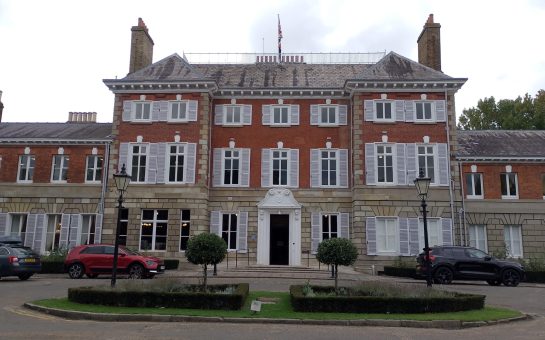Florence Leslie
January 16 2019, 13.30
Follow @SW_Londoner
Merton Council went from being the only council where women earned more than men to having the widest gender pay gap among south west London councils in 2018.
Female staff working for Merton Council earned £1.04 for every pound a male staff member earned in 2017 and plummeted to 92p for every pound a man earned in 2018, with a difference of 12p on average overall, according to the latest data sourced from the government’s Gender Pay Gap service .
Across council staff working for Wandsworth, Merton, Richmond, Croydon, Kingston, Kensington and Chelsea, Hammersmith and Fulham, Sutton and Lambeth there was an increase in the gender pay gap overall and none of the councils reached a level pay scale.
In a pay policy statement for 2019/2020 , Merton Council said: “In March 2017, 185 mainly male relatively lower paid staff transferred out with Street Scene and Waste and in February, 62 were transferred from Sustainable Communities.
“Meanwhile, 65 regulatory services employees transferred to Merton from Wandsworth in November 2017.
“These mainly higher paid staff who were employed by Wandsworth include a large number of men.
“Men also receive higher bonuses on average, this being mainly due to a high proportion of pay consisting of bonuses in the small mainly male bailiffs service.”
Data sourced from the government’s Gender Pay Gap Service also shows while men and women working in the upper pay quartiles of the south west London councils is roughly even, more women work in relatively lower paid jobs than men so the transfer of men out of Merton’s lower pay quartiles caused the gap to widen overall.
Sutton Council’s gender pay gap also saw an increase of 11p on average in 2018 and was previously the only council to achieve no gender pay gap in 2017.
A Sutton Council spokesperson said: “Structural changes to the workforce, such as the transfer of former council staff to Sutton’s waste contractor, did have an impact on the gender pay gap figure.”
They gave examples of lower quartile jobs as business support officers and customer services officers, and upper quartile roles include managerial positions like team manager in adult or children’s social care.
Sutton added they have established a new women’s network, providing mentoring and support for all women staff members and looking specifically at the gender pay gap issue with the Human Resources Department.
They said their work has seen the gap reduce again and the average reported gender pay gap figure has shrunk from a 14.6% gap in March 2018 to a 9.3% gap in March 2019 although the full data for 2019 is yet to be published on the government’s Gender Pay Gap Service.
Aligning with Sutton’s successful new policies addressing the pay gap issue, Lambeth Council saw the best improvement with a 4p average decrease in their gender pay gap.
A Lambeth spokesperson said they achieved this by being an accredited London Living Wage employer, running unconscious bias training and having flexible working policies for all employees.
They added: “Lambeth council is working hard to tackle work place inequality, and the narrowing of the gender pay gap shows that progress is being made.
“Importantly, at the council all male and female employees are paid the same for equivalent work.”
The gender pay gap is not the same as men and women being paid unequally for doing the same job which has been illegal since the 1970 Equal Pay Act.
Data published by the Office of National Statistics in November shows women continue to earn less than men on average in the UK and the gender pay gap among full-time employees was 8.9% in 2019.
BBC presenter Samira Ahmed successfully took the BBC to an employment tribunal last week, arguing she was owed £700,000 for being underpaid presenting Newswatch compared to Jeremy Vine’s salary for the similar show Points of View.
Gender inequality campaigning organisation, the Fawcett Society, Head of Policy and Research Gemma Rosenblatt said: “Judgement on the Samira Ahmed case has shown equal pay should not be treated by employers as an optional extra that can be ignored when inconvenient.
“Employers across the board should learn from the mistakes of the BBC and put in place a clear and transparent pay structure.
“Women have a legal right to be paid equally for work of equal value – but all too often are missing out on equal pay because salary discrepancies are being hidden.”
In their October 2019 Gender Pay Gap Briefing, the Fawcett Society said: “The overall gender pay gap is caused by a combination of factors— the unequal impact of caring roles and a lack of support for mothers’ career progression, a divided labour market in terms of skills and occupational segregation of women into more low-paid work, outright discrimination against women and the over-representation of men at the top of the pay scale and women at the bottom.”
Employers with 250 or more employees must legally publish figures comparing men and women’s average hourly pay by 31 March each year on their own website and the government’s Gender Pay Gap service.
Merton Council was approached for comment but declined.




